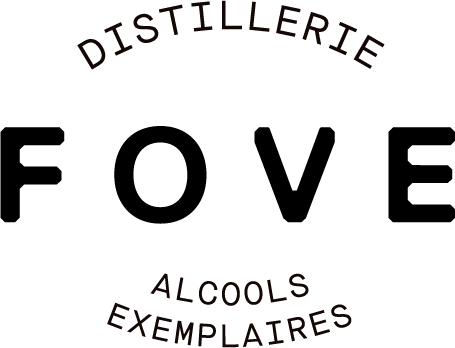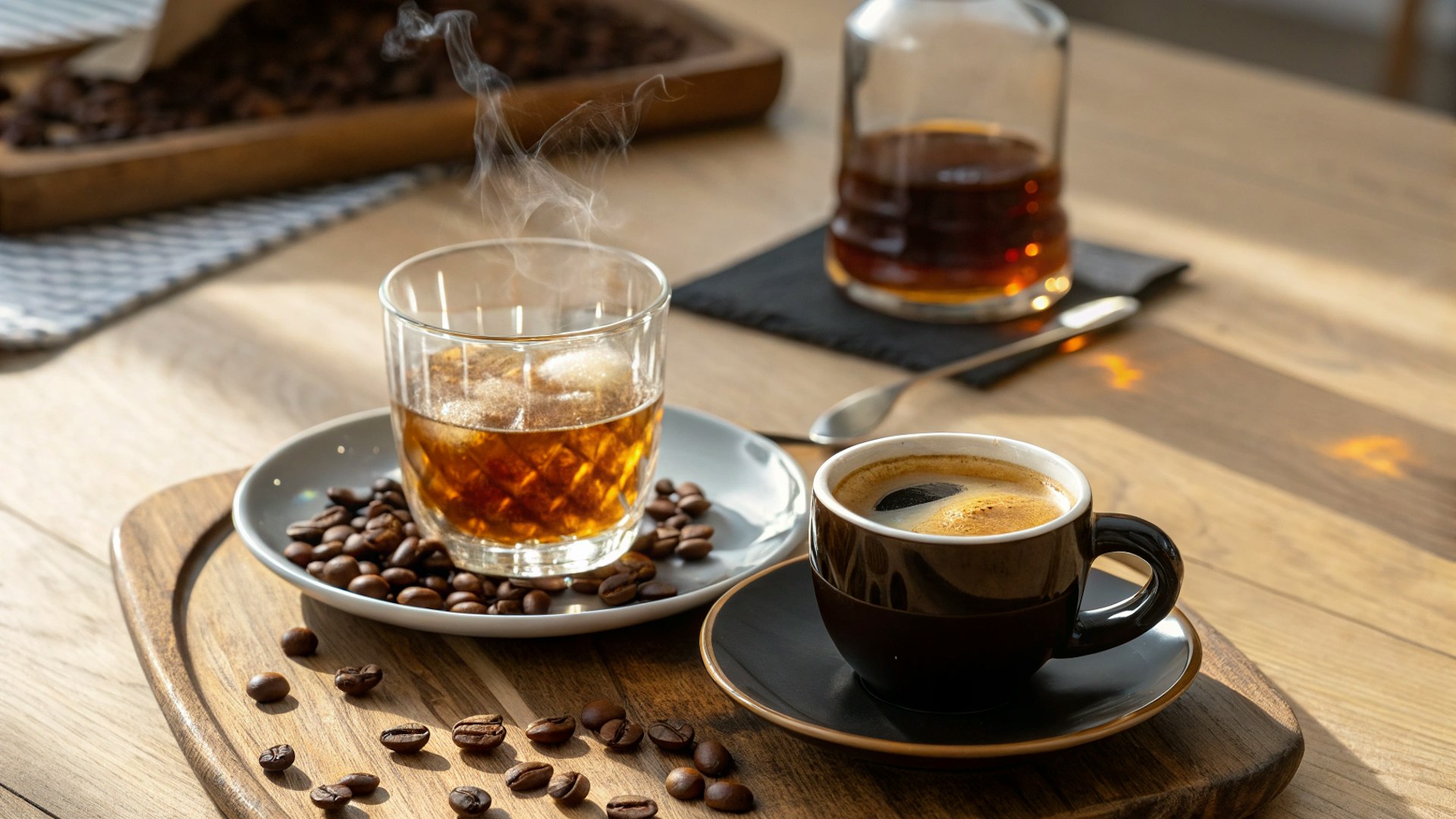
Rum, vodka, liqueur, or gin — today, coffee infuses its way into spirits.
But this meeting is no accident. Behind every sip lies a story of origins, culture, passion, and experimentation.
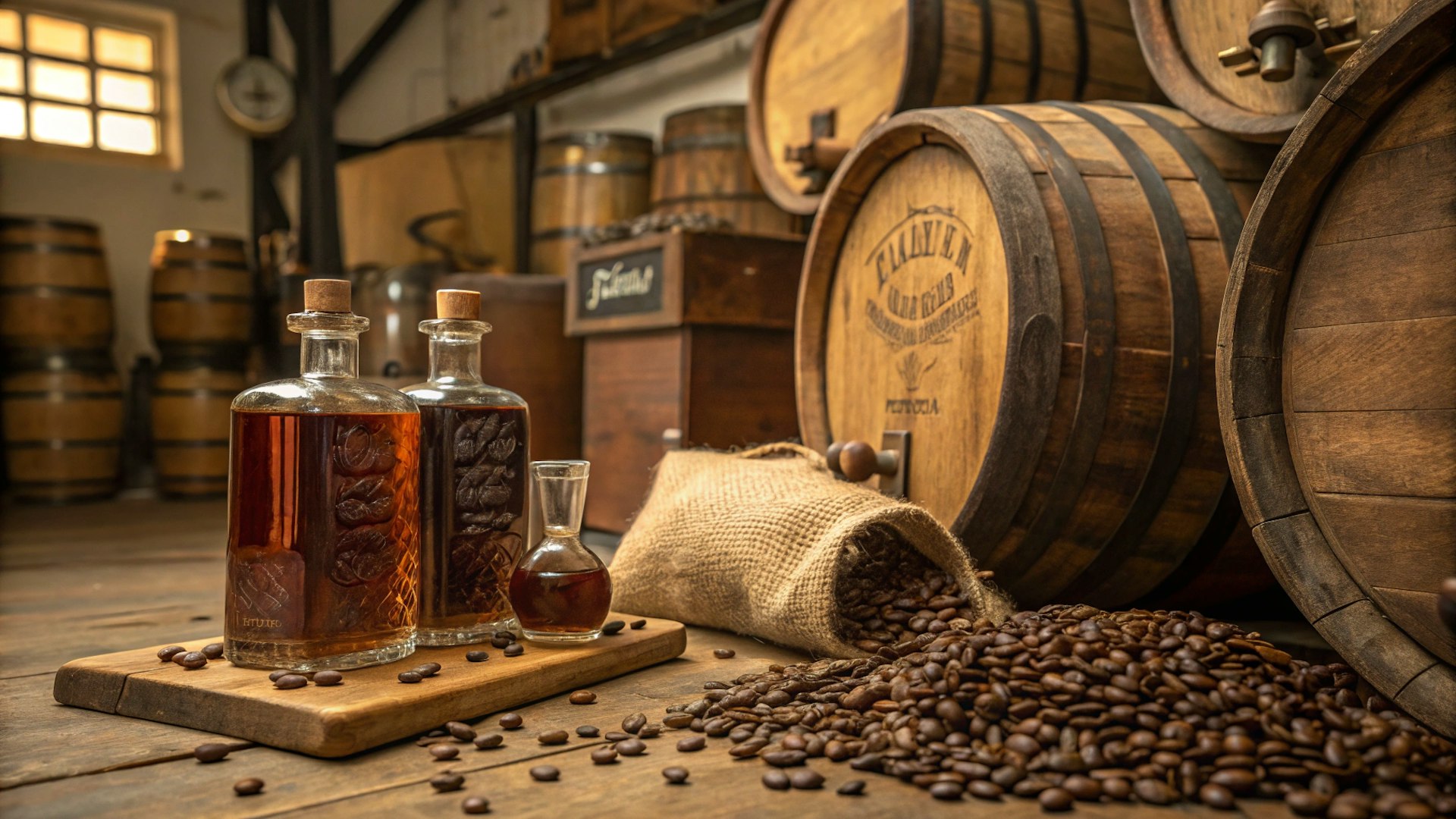
From morning to nightcap: a story of contrasts
Coffee and alcohol are two rituals deeply embedded in our lives.
One starts the day, the other ends it. One awakens, the other soothes. Yet these two worlds didn’t take long to intersect.
As early as the 19th century, coffee began to be infused into spirits to create indulgent, often very sweet liqueurs. It was the beginning of a long friendship.
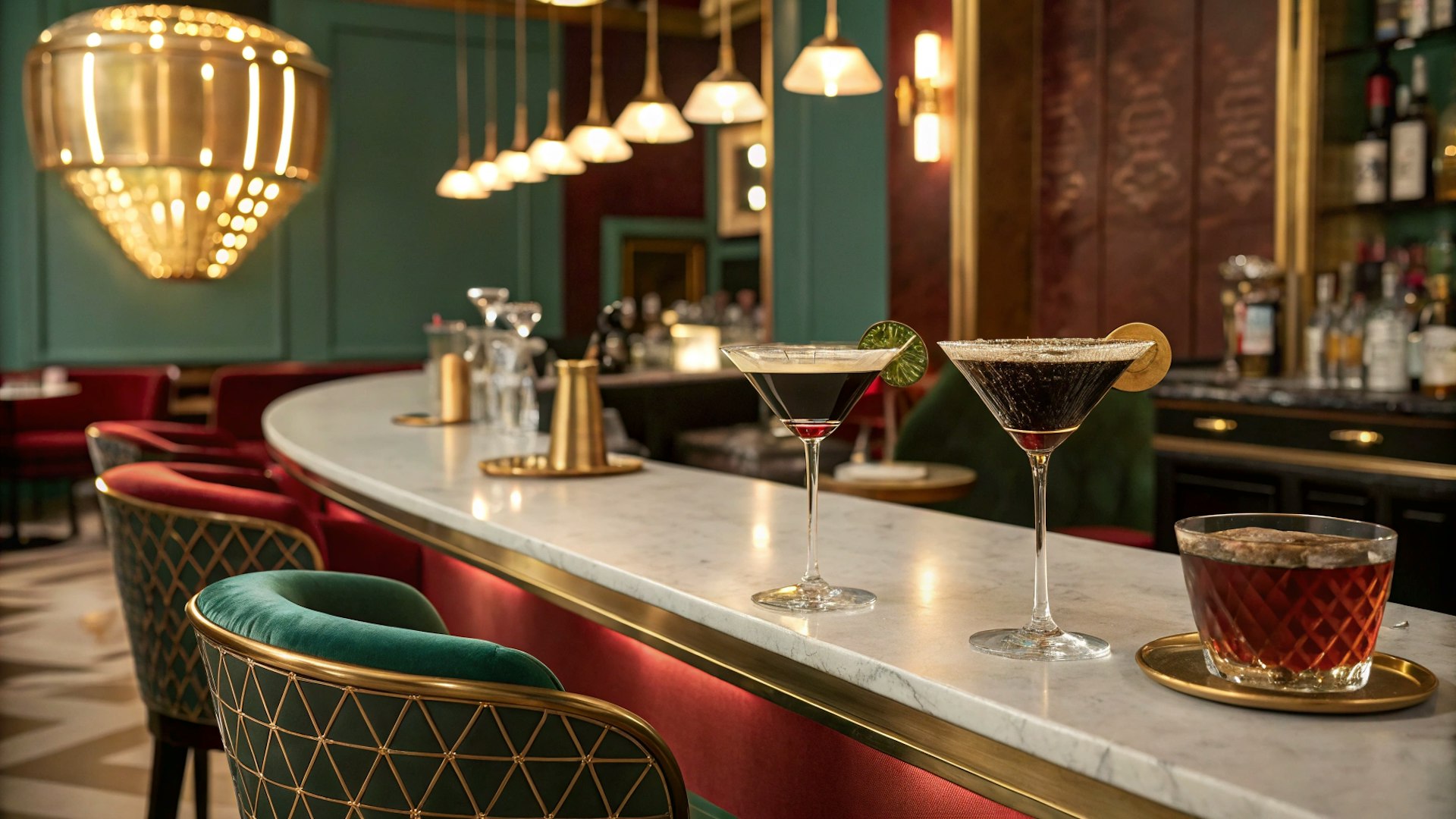
The 1950s: the golden age of coffee liqueurs
It was in the post-war era that coffee liqueurs stepped out of the shadows to shine internationally. Two names dominated the scene: Kahlúa and Tia Maria.
Born in 1936 in Veracruz, Kahlúa combines Mexican Arabica coffee, vanilla, and rum. Initially little known, it benefited in the 1950s from North America’s appetite for sweet and “exotic” flavors. Its success was such that it quickly became a global reference.
Meanwhile, Jamaica offered Tia Maria, a liqueur wrapped in legend: a Spanish aristocrat who had taken refuge on the island in the 17th century supposedly passed the recipe to her maid, Maria. Beyond the myth, the product captivated with the finesse of Blue Mountain coffee and the character of local rum.
These two liqueurs embodied the spirit of the fifties: a thirst for novelty, distant lands, and glamorous cocktails. They gave birth to classics like the Black Russian (born in Brussels in 1949) and the White Russian, later immortalized by The Big Lebowski.
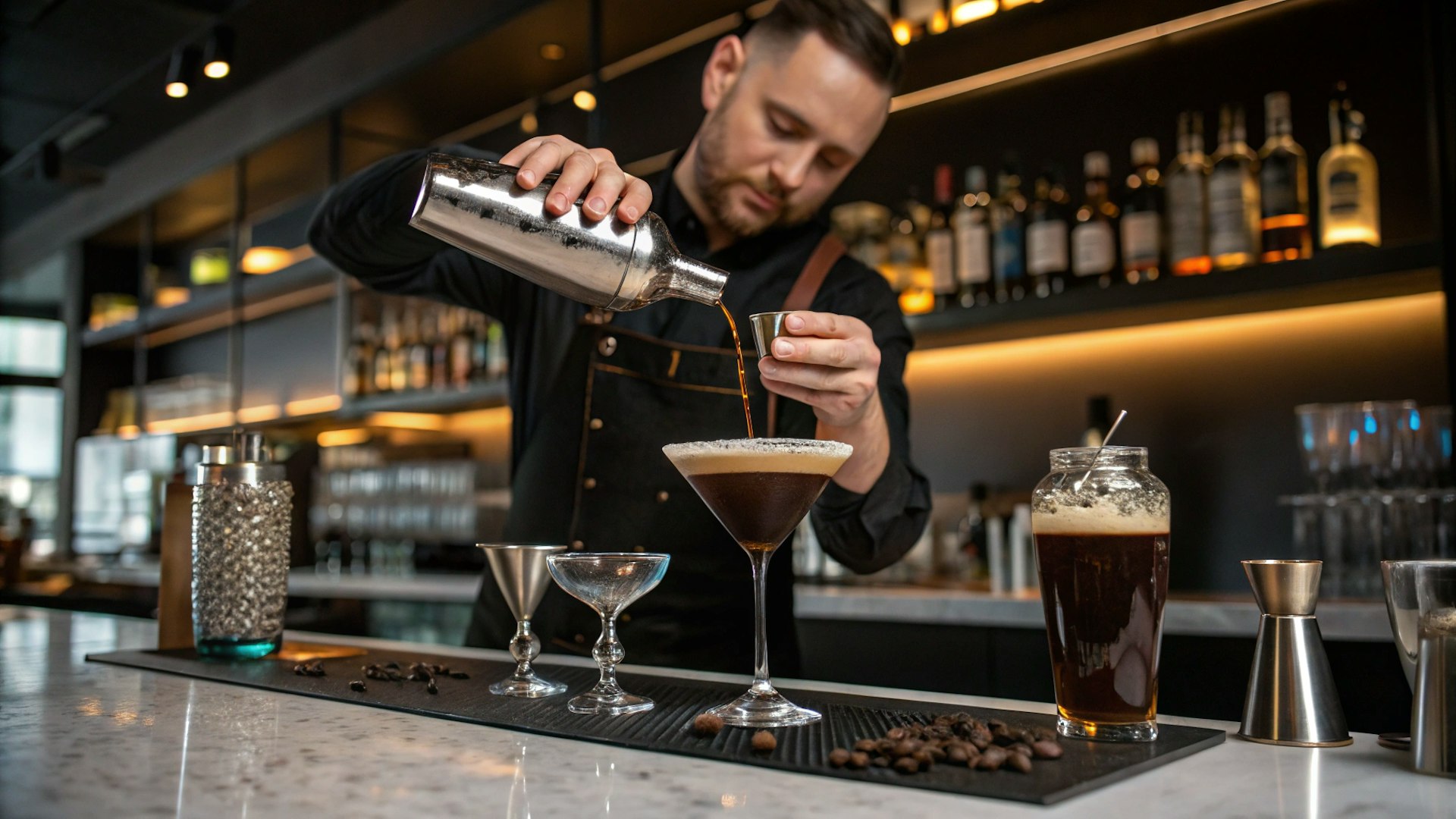
The revival: when coffee regained style
After this golden age, coffee liqueurs went through a slump. They remained popular but were often confined to very sweet, almost retro recipes.
It wasn’t until the cocktail scene of the 1980s and the rise of microdistilleries that coffee regained a new aura in spirits.
In 1980s London, bartender Dick Bradsell invented the Espresso Martini. His recipe — vodka, coffee liqueur, freshly pulled espresso — quickly became iconic. More sophisticated than a classic digestif, more modern than a tiki cocktail, it restored coffee’s central role behind the bar.
Then came the 2000s. Microdistilleries multiplied, while the third wave of coffee established itself with its focus on specialty beans, traceability, and precise extraction methods. Distillers and mixologists aimed to go beyond sugar: they sought to express coffee’s richness, noble bitterness, roasted notes, and aromatic depth. Techniques were rediscovered:
Cold infusion for finesse
Maceration for roundness
Distillation for innovation
Coffee stopped being just an “exotic flavor” or a gimmicky ingredient. It became a noble product, treated with the same respect as malt in whisky or grapes in wine.
A pairing that transcends time
Coffee and spirits share the same intensity: aromatic richness, depth, warmth. One extends the other, and together they create a unique balance between energy and relaxation.
Perhaps that’s why this alliance endures through the ages — a pairing built to last, as timeless as a good coffee or a shared glass.

